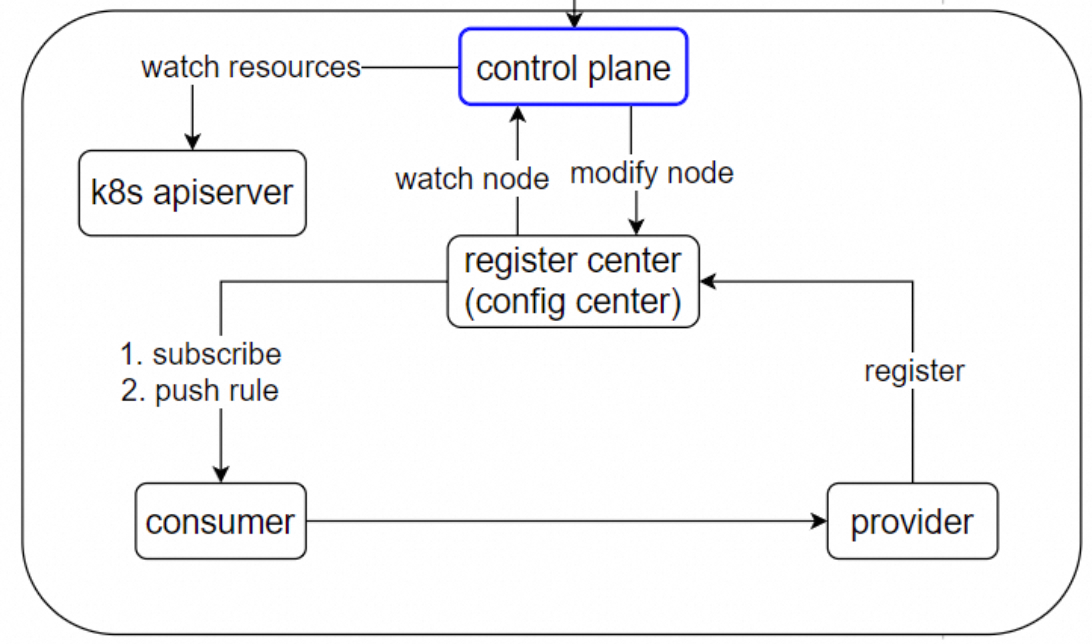Deploying Dubbo Applications to Kubernetes Environments
This model is not much different from traditional non-Kubernetes deployments. As shown in the picture below, Nacos or Zookeeper is still used as the registry, but Kubernetes is used as the underlying platform for application lifecycle scheduling.

Install Nacos
In Kubernetes mode, we recommend using dubboctl to quickly install components like Nacos, dubbo-control-plane, prometheus, etc.:
$ dubboctl install --profile=demo
Tip
- Please refer to dubboctl for more details.
- You can also check out the official Nacos installation plan for Kubernetes clusters.
Deploy Application
We still take the project in Quick Start as an example to demonstrate the specific steps for packaging and deploying the application.
First, clone the sample project locally:
$ git clone -b main --depth 1 https://github.com/apache/dubbo-samples
Switch to the example directory:
$ cd dubbo-samples/11-quickstart
Package Image
$ dubboctl build
# Specifically push to docker repository
Deploy
$ dubboctl deploy
Here are the generated complete Kubernetes manifests:
Run the following command to deploy the application to the Kubernetes cluster:
$ kubectl apply -f xxx.yml
Check Deployment Status
If you have previously installed dubbo-control-plane using dubboctl, you can check the service deployment status as follows:
$ kubectl port-forward
Access http://xxx to view the service deployment details.
Graceful Online/Offline
As shown in the architecture diagram above, we still use Nacos as the registry. Therefore, similar to traditional Linux deployment models, the timing of publishing instances to the registry and removing instances from the registry is key to achieving graceful online/offline:
- Online phase, control when instances register to the registry using the delayed publishing mechanism, and ensure traffic is gradually directed to new nodes by enabling consumer-side warming.
- Offline phase, configure
prestopto ensure instance registration information is removed from the registry first, before proceeding to the process destruction phase.
Example configuration for gracefully offline removing instances:
preStop:
exec:
command: ["/bin/sh","-c","curl /offline; sleep 10"]